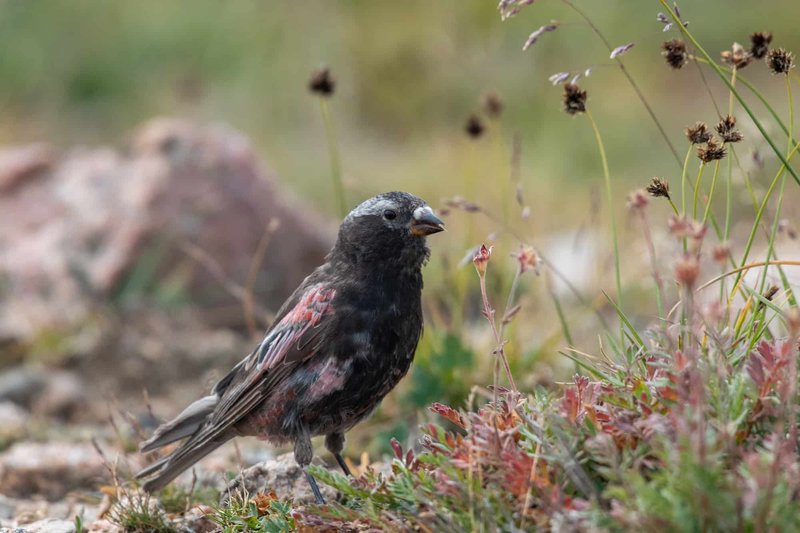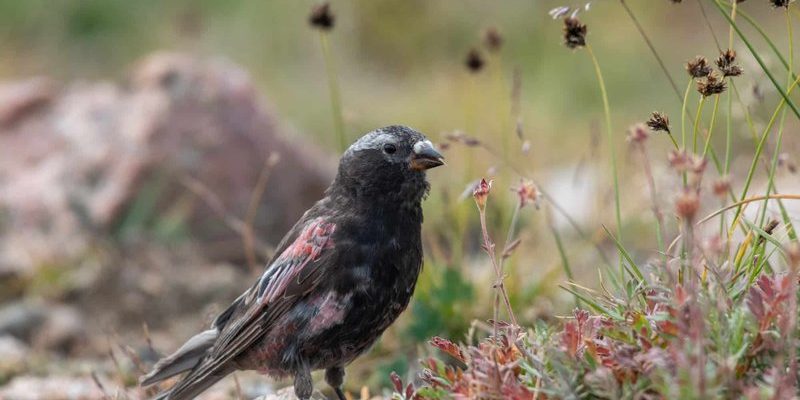
So, where can you actually spot these delightful birds? In this article, we’ll dive deep into the diverse habitats and ranges of finches around the world. Imagine we’re sitting over coffee, and you’re curious about these avian wonders. I’ll break down the key locations where finches thrive, from bustling urban areas to serene forests and everywhere in between.
Understanding Finch Habitats
To appreciate where to spot finches, it’s crucial to understand their habitats. Finches are not picky eaters, and they can adapt to a variety of environments. You might find them in gardens, forests, grasslands, and even mountainous regions. These birds typically enjoy areas that provide a mix of food sources—think seeds, fruit, and insects.
One of the most common species, the house finch, has made its home in urban areas all over North America. You might see them perched on the ledges of buildings, feasting on seeds from bird feeders or even picking at scraps in parks. It’s fascinating how these little birds thrive alongside humans, adapting their habits to fit our world.
Overall, finches tend to favor environments that offer cover for nesting and protection from predators. They’re known to be quite resourceful, moving to habitats that suit their needs as they evolve. This adaptability is one reason why finches are found in such a wide array of locations.
North America: A Finch Paradise
In North America, *Chirping finches* are everywhere! You’ll find various species, like the American goldfinch, house finch, and purple finch, across the continent. They love open fields, gardens, and parks, making them a common sight in both urban and rural settings.
The American goldfinch, with its vibrant yellow plumage, is particularly fond of wildflowers and thistles. You might spot them during late summer, especially around sunflower fields. They prefer habitats with plenty of food and nesting options.
It’s also worth noting that finches in North America migrate seasonally. So, if you’re hoping to spot them, timing is key. In spring and summer, they’re more active and visible, while in winter, some species may travel south in search of warmer climates. If you keep your eyes peeled and your bird feeder stocked, there’s a good chance you’ll see these cheerful birds fluttering about.
Europe: The Finch’s Playground
Traveling across the Atlantic to Europe, finches still play a significant role in local ecosystems. Here, you can find the European goldfinch, which often visits gardens and parks in search of seeds. These finches have stunning red faces and can be quite bold, often showing up at backyard feeders.
Each species has its own preferences for habitat, but many European finches thrive in woodlands, hedgerows, and farmlands. You might also spot the Eurasian siskin, which loves coniferous forests and is easily recognized by its vibrant yellow-green coloration.
What’s interesting is that European finches are quite sociable and often congregate in flocks, especially during the winter months. If you’re out for a walk in a park or forest, keep an ear out for their cheerful chirping—it’s a telltale sign they might be nearby.
South America: Finch Diversity in the Tropics
Now let’s take a trip south to South America, where finch diversity truly shines. The continent is home to many finch species, including the brightly-colored *Saffron Finch*, which can be found in open grasslands and savannas. This finch enjoys a diet rich in seeds and fruits, making it a common sight around agricultural areas.
You might be wondering about the unique environments they thrive in. South American finches are often found near water sources, like rivers or ponds, where they can easily access food and nesting materials. The lush, tropical forests are also an excellent habitat for the *Black-faced Dacnis*, known for its striking blue coloring.
It’s amazing how finches in these habitats display such a variety of colors and behaviors, adapting to the rich biodiversity around them. If you’re birdwatching in South America, take your time—there’s often a finch lurking nearby, ready to put on a show.
Africa and Asia: Unique Finches in Diverse Regions
In Africa and Asia, finches continue to demonstrate their adaptability. The *African silverbill*, for instance, is commonly found in grasslands and scrub, but you might also spot it around agricultural areas. They’re known for their sociable behavior, often seen in flocks foraging for seeds together.
In Asia, the *Oriental greenfinch* prefers wooded areas and gardens. Its striking green coloration makes it a standout among tree branches and foliage. Finches in these regions have adapted to the unique climates and landscapes, showcasing everything from arid deserts to lush, forested areas.
Here’s the thing: If you’re looking to spot these finches, consider your surroundings. Habitats vary greatly across these continents, but the common thread is that finches thrive where food is plentiful and there’s enough shelter. Whether you’re hiking in the mountains or strolling through a city park, keep your eyes peeled for these feathered friends!
Tips for Spotting Finches
Alright, you’ve got the locations down, but how do you actually spot these elusive birds? Here are some simple tips:
- Be patient: Birds can be shy, and it might take some time for them to show up.
- Use binoculars: A good pair of binoculars can help you catch a closer glimpse without scaring them away.
- Pay attention to their calls: Learning the sounds of various finches can give you a heads-up when they’re nearby.
- Visit food-rich areas: Parks and gardens with bird feeders or flowering plants are likely spots to find finches.
By taking these steps, you’ll increase your chances of encountering these charming little birds. Birdwatching can be a peaceful and rewarding hobby, allowing you to connect with nature in a unique way.
Protecting Finch Habitats
As charming as finches are, their habitats are under threat from urban development, climate change, and habitat loss. It’s important to remember that every little action counts when it comes to protecting these birds and their environments.
You might consider participating in local conservation efforts or simply creating a bird-friendly space in your own backyard. Planting native flowers and providing food sources can attract finches and other birds, making your garden a haven for wildlife.
Additionally, spreading awareness about the importance of preserving natural habitats is crucial. The more we educate ourselves and others about these lovely creatures, the better chance we have of keeping their populations thriving for future generations.
In conclusion, whether you’re an experienced birdwatcher or just beginning to explore the world of finches, there’s a lot to appreciate. From North America to South America, Europe to Asia, finches are truly a global phenomenon. Next time you’re outside, take a moment to look up and enjoy the little marvels of nature around you. Who knows? You might just spot a finch!

